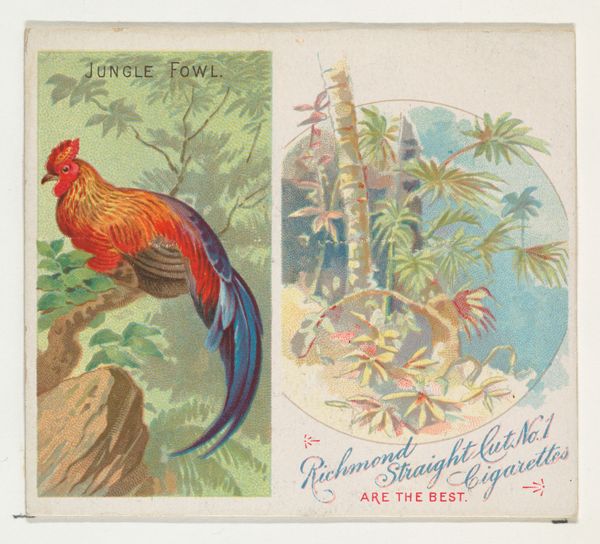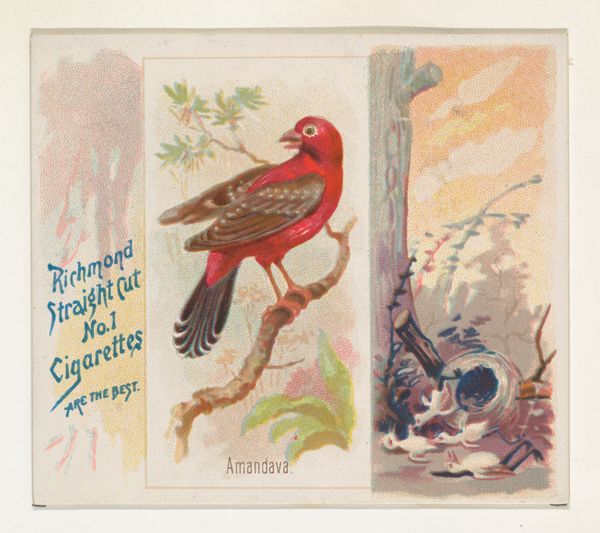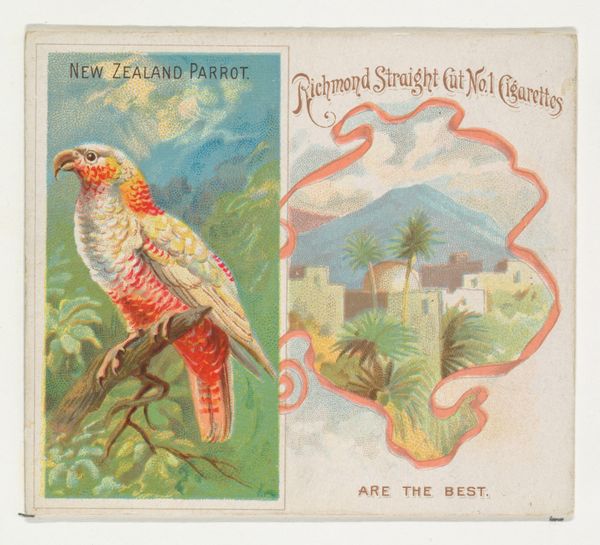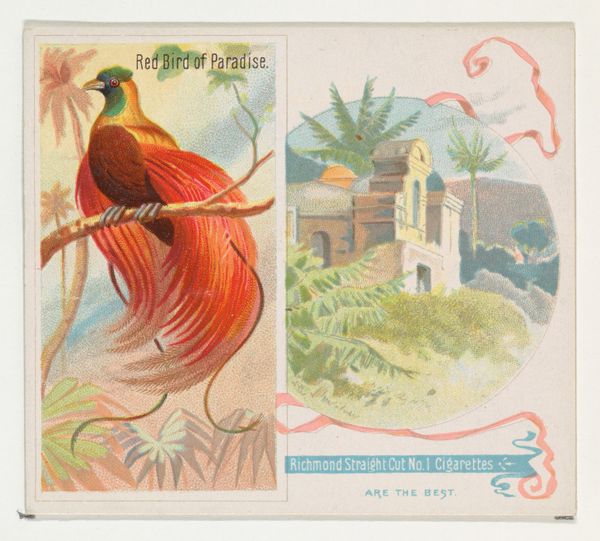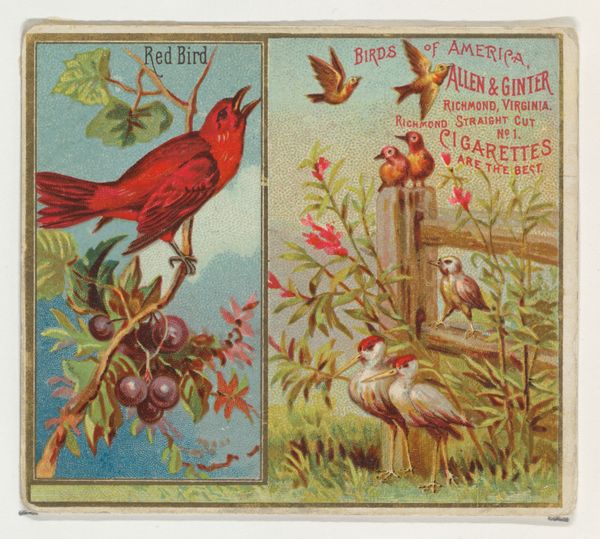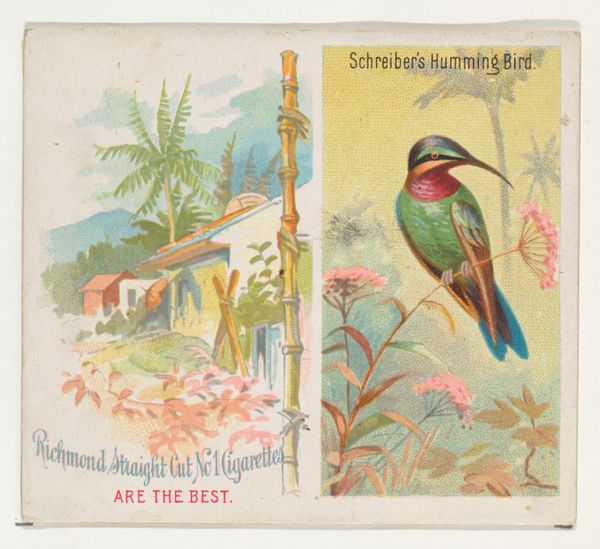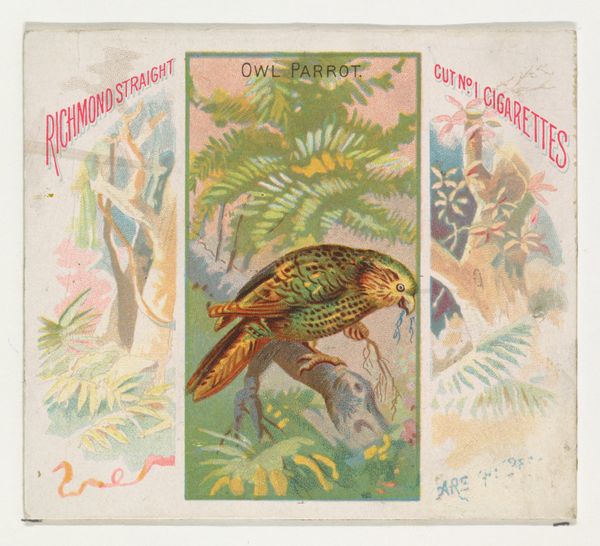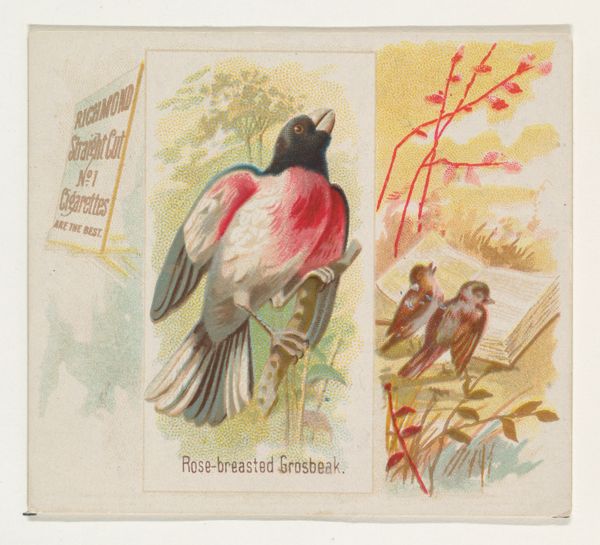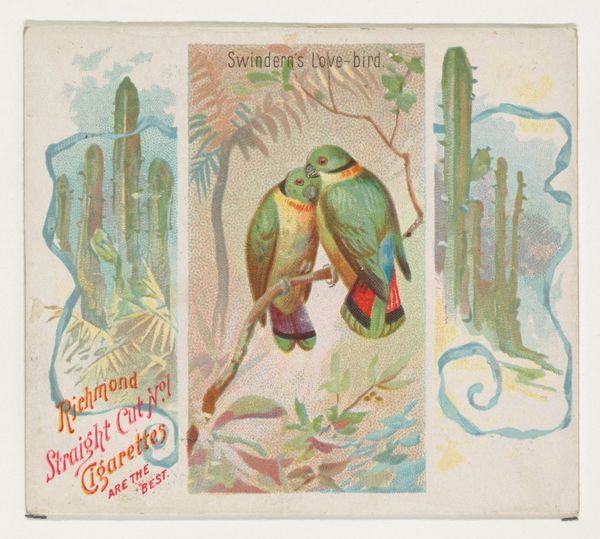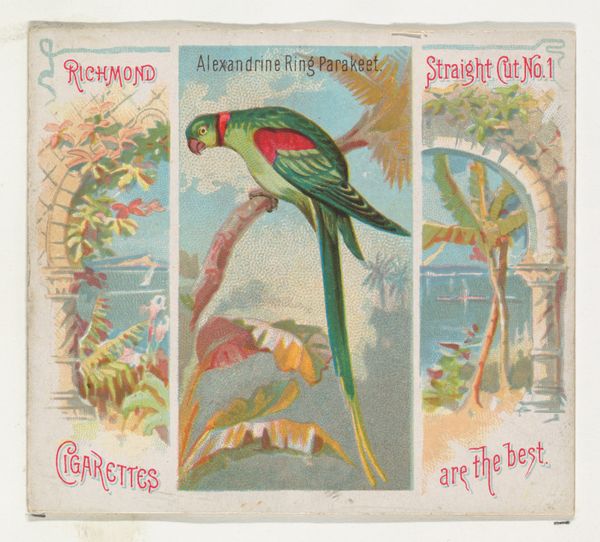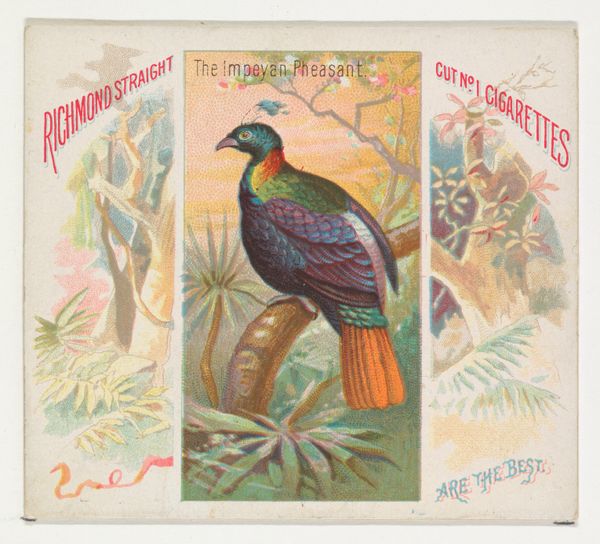
King Bird of Paradise, from Birds of the Tropics series (N38) for Allen & Ginter Cigarettes 1889
0:00
0:00
drawing, coloured-pencil, print, watercolor
#
drawing
#
art-nouveau
#
coloured-pencil
#
water colours
# print
#
watercolor
#
coloured pencil
#
art nouveau
#
watercolour illustration
Dimensions: Sheet: 2 7/8 x 3 1/4 in. (7.3 x 8.3 cm)
Copyright: Public Domain
Editor: So this is "King Bird of Paradise" from the "Birds of the Tropics" series, made by Allen & Ginter in 1889, apparently for cigarette cards. It’s watercolor and colored pencil on paper, I believe. What strikes me is how vibrant the bird is, juxtaposed against the soft focus of the jungle scene, and that commercial text there too… What’s your take? Curator: What interests me is precisely the materiality of it, its origin as a mass-produced commercial object distributed with cigarettes. The labor involved in creating thousands of these cards, the specific printing techniques used, and the distribution networks – these are all fascinating aspects that connect art to broader systems of production and consumption. What kind of consumer were they targeting, I wonder, and what kind of ideas about exoticism and natural resources were being promoted with images like this? Editor: I hadn’t really thought about it that way. I was just appreciating the artistry of it, I guess. Curator: The artistry is definitely present. The choice of watercolor and colored pencil suggests a deliberate aesthetic, appealing to a certain sensibility. But we can't ignore the social context. Consider how these cards were collected, traded, and consumed. The imagery served not just as art, but as a form of advertising intertwined with a specific social habit—smoking—and the culture that supported it. Editor: So, looking at the means of production, distribution and consumption can reveal a lot more than just the image itself, right? How it was manufactured, how it circulated, and who it reached. Curator: Precisely. It shifts the focus from a singular artistic genius to a broader understanding of cultural forces at play. Where did the paper come from? What were the working conditions for the printers? Editor: Wow, I guess that commercial text really does open a Pandora's Box, doesn’t it? Thank you for illuminating this historical piece in a whole new light. Curator: My pleasure. Seeing art as part of larger material and social systems allows us to understand its cultural function more fully.
Comments
No comments
Be the first to comment and join the conversation on the ultimate creative platform.
